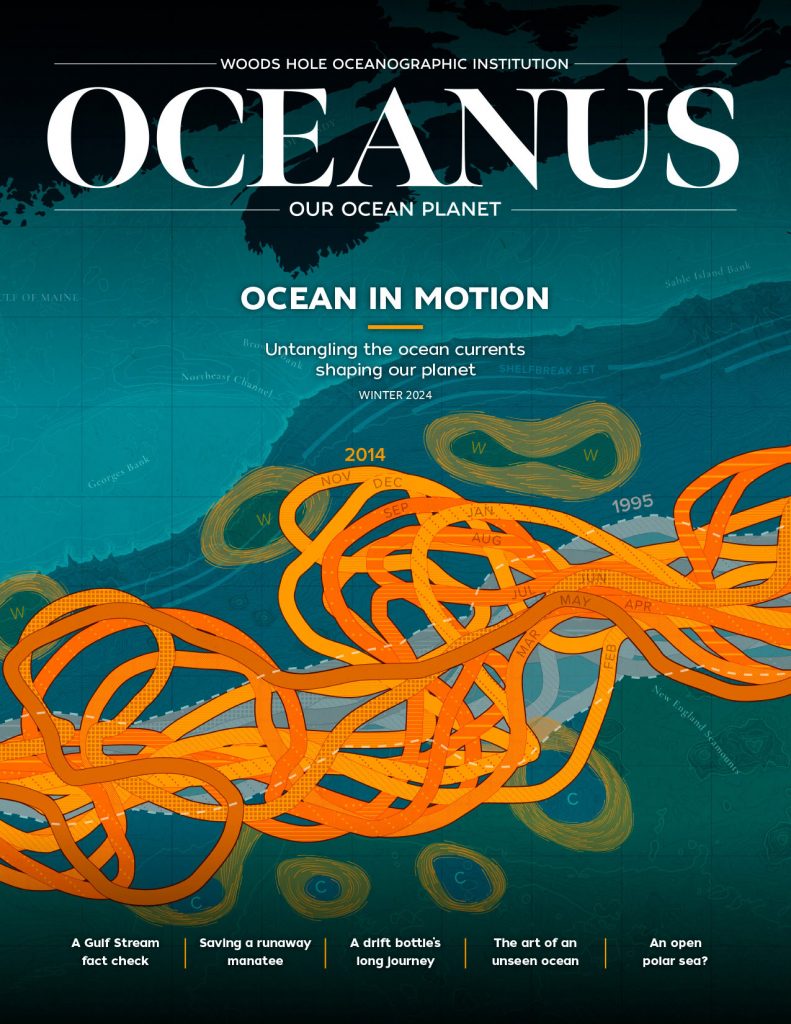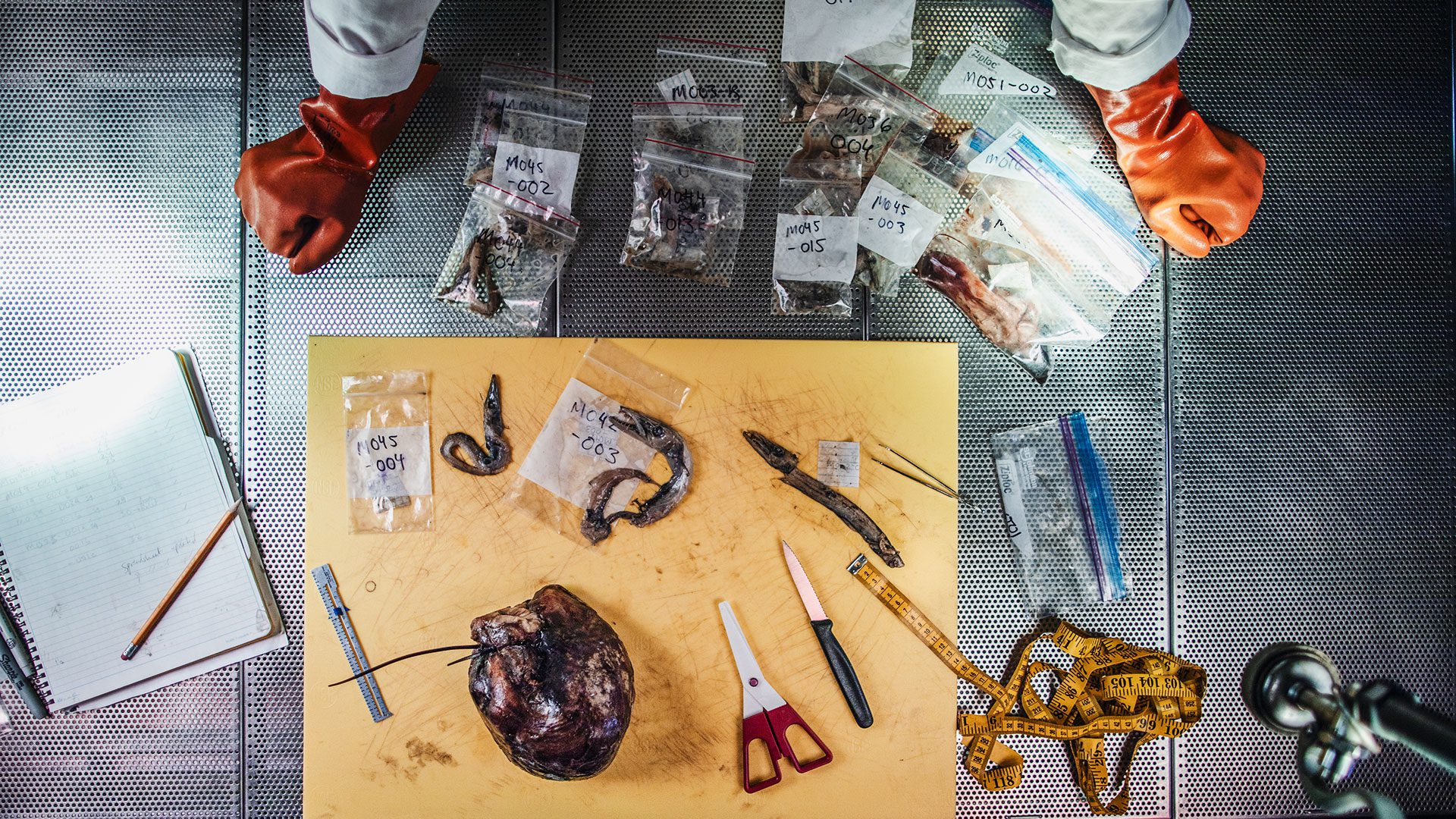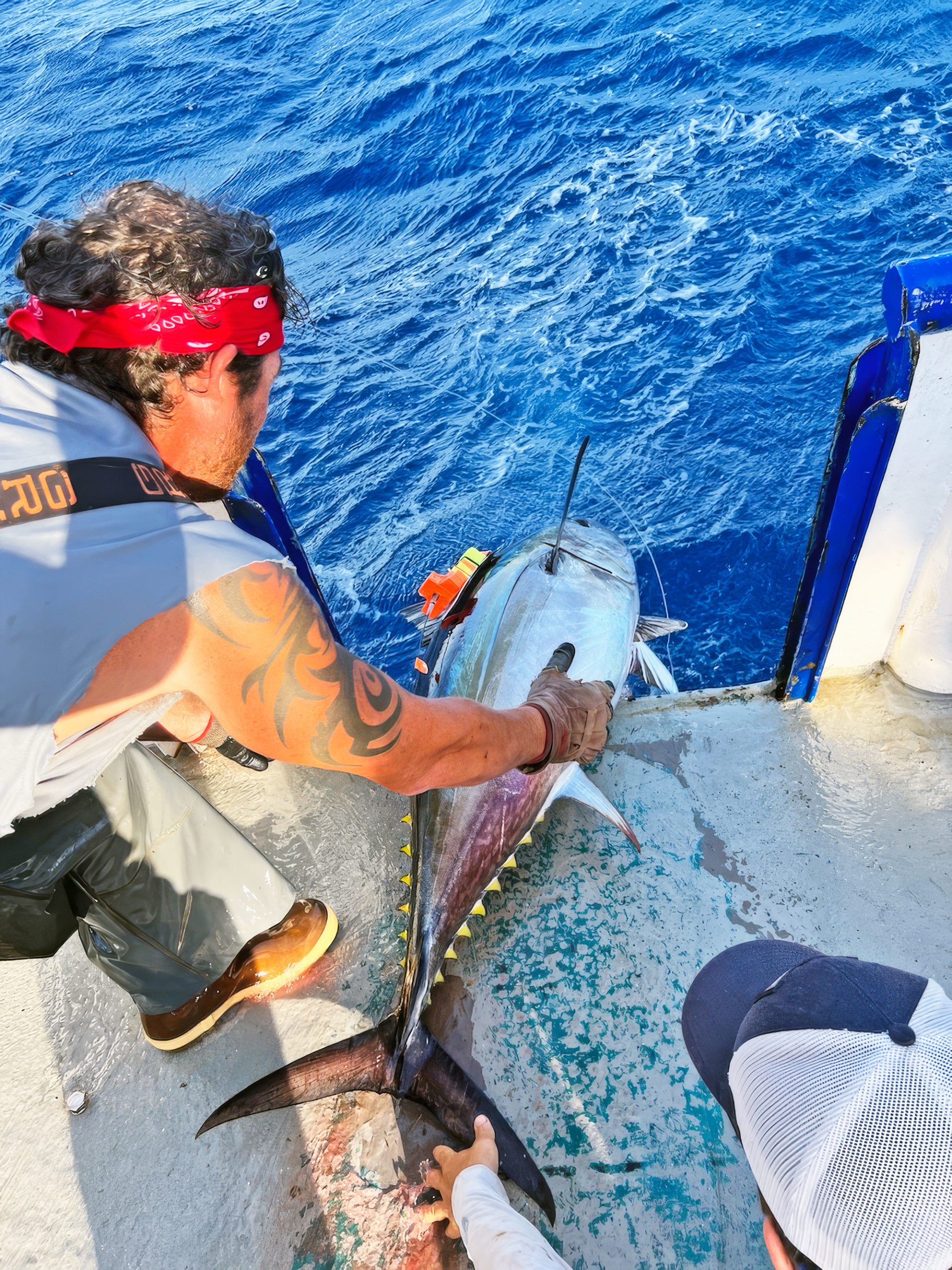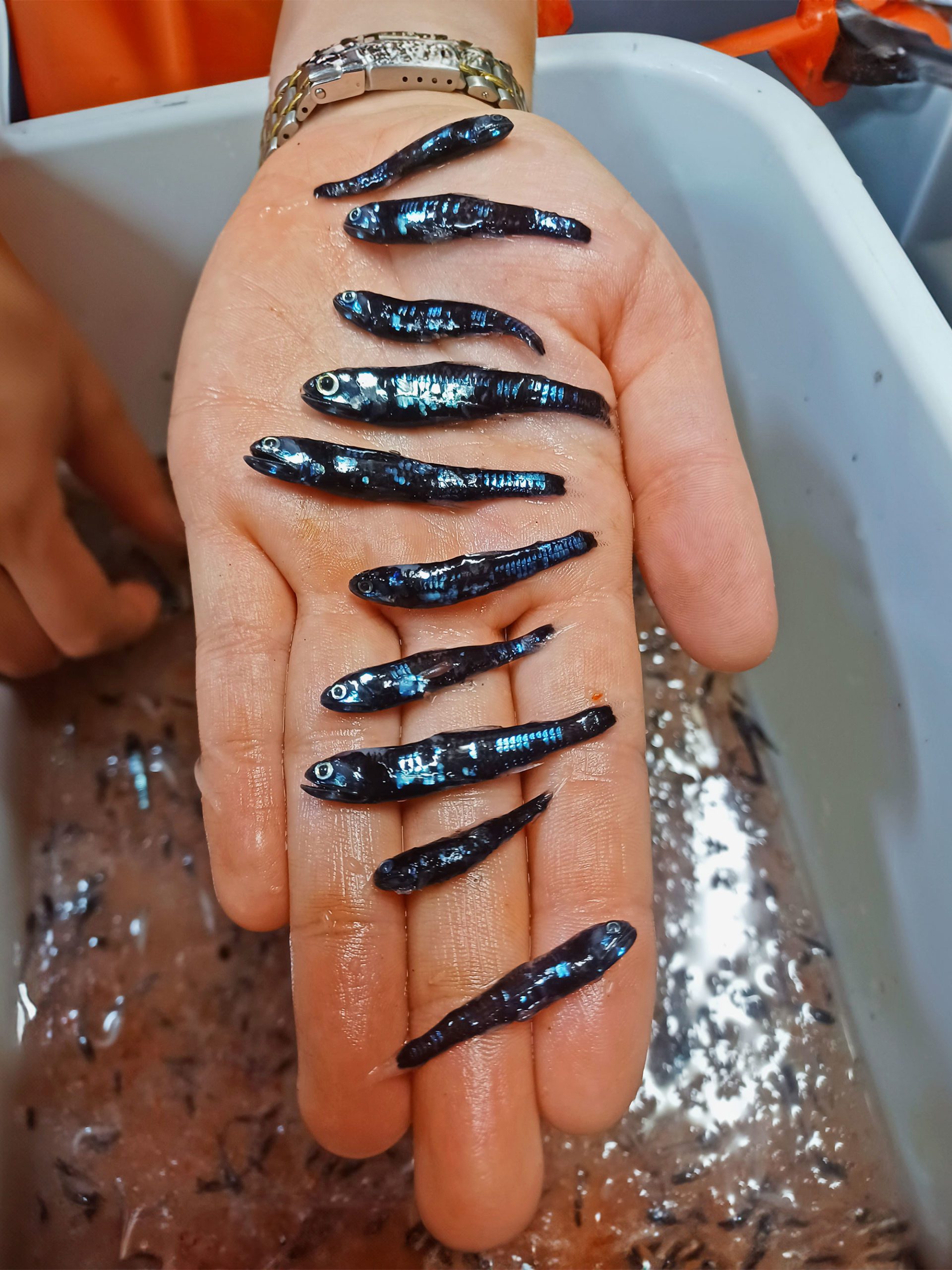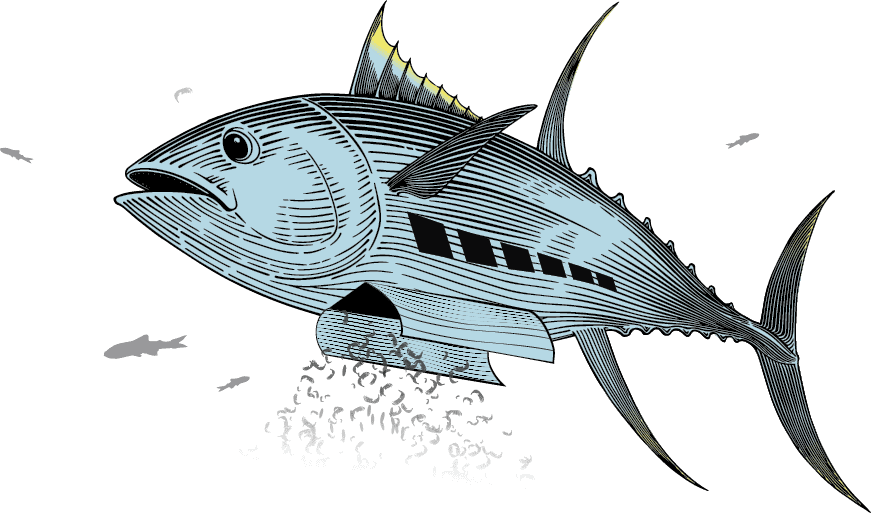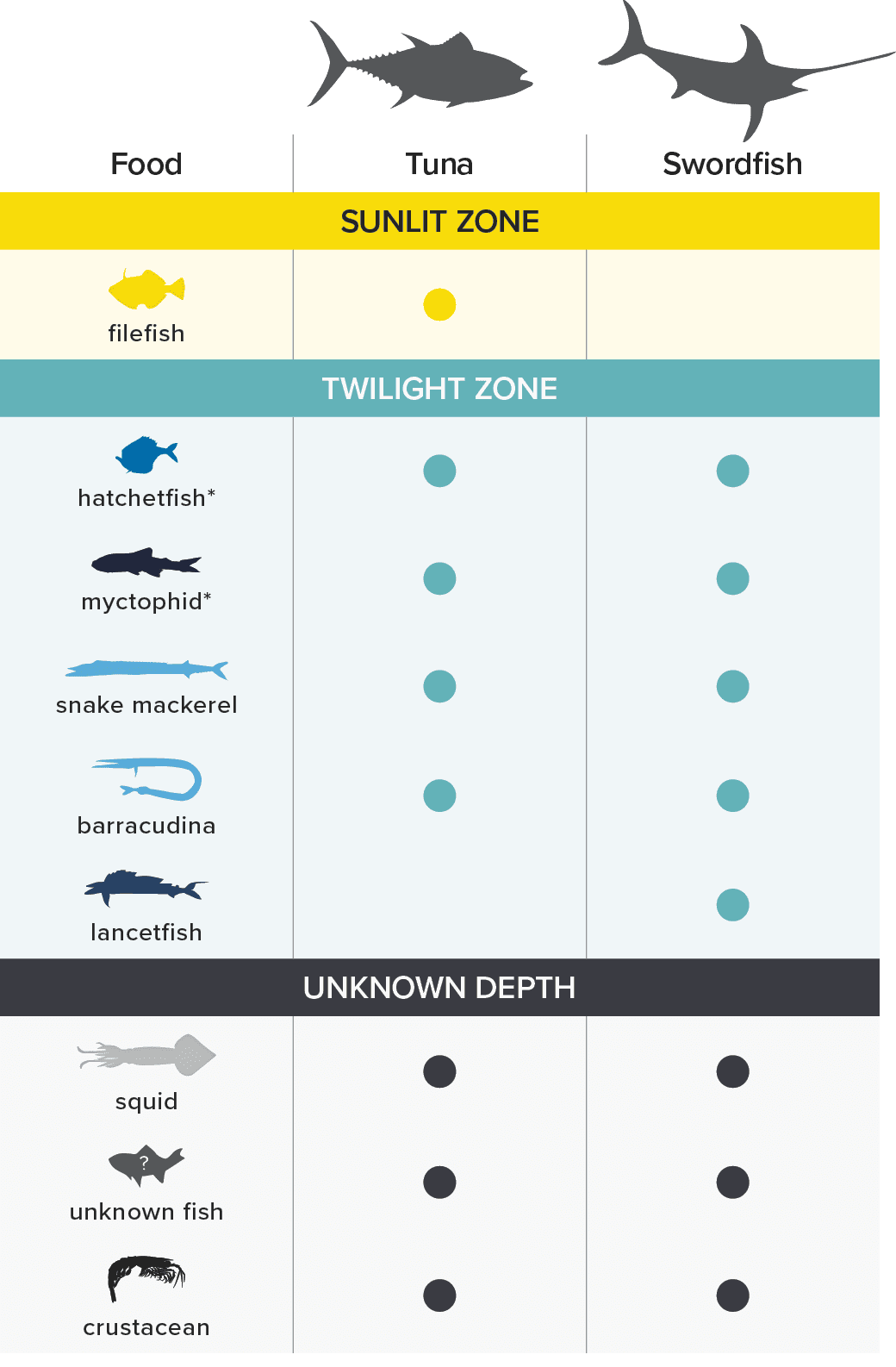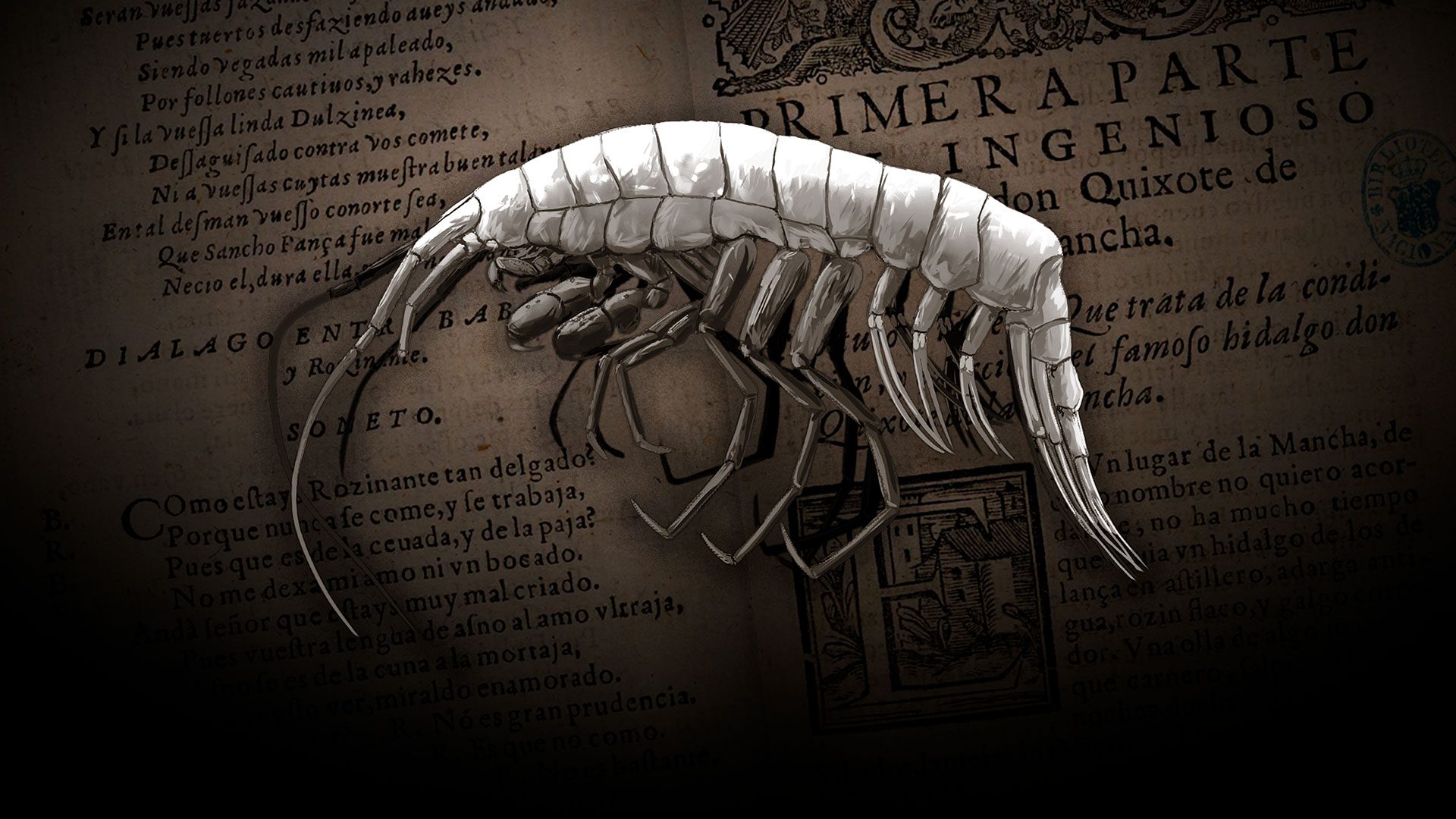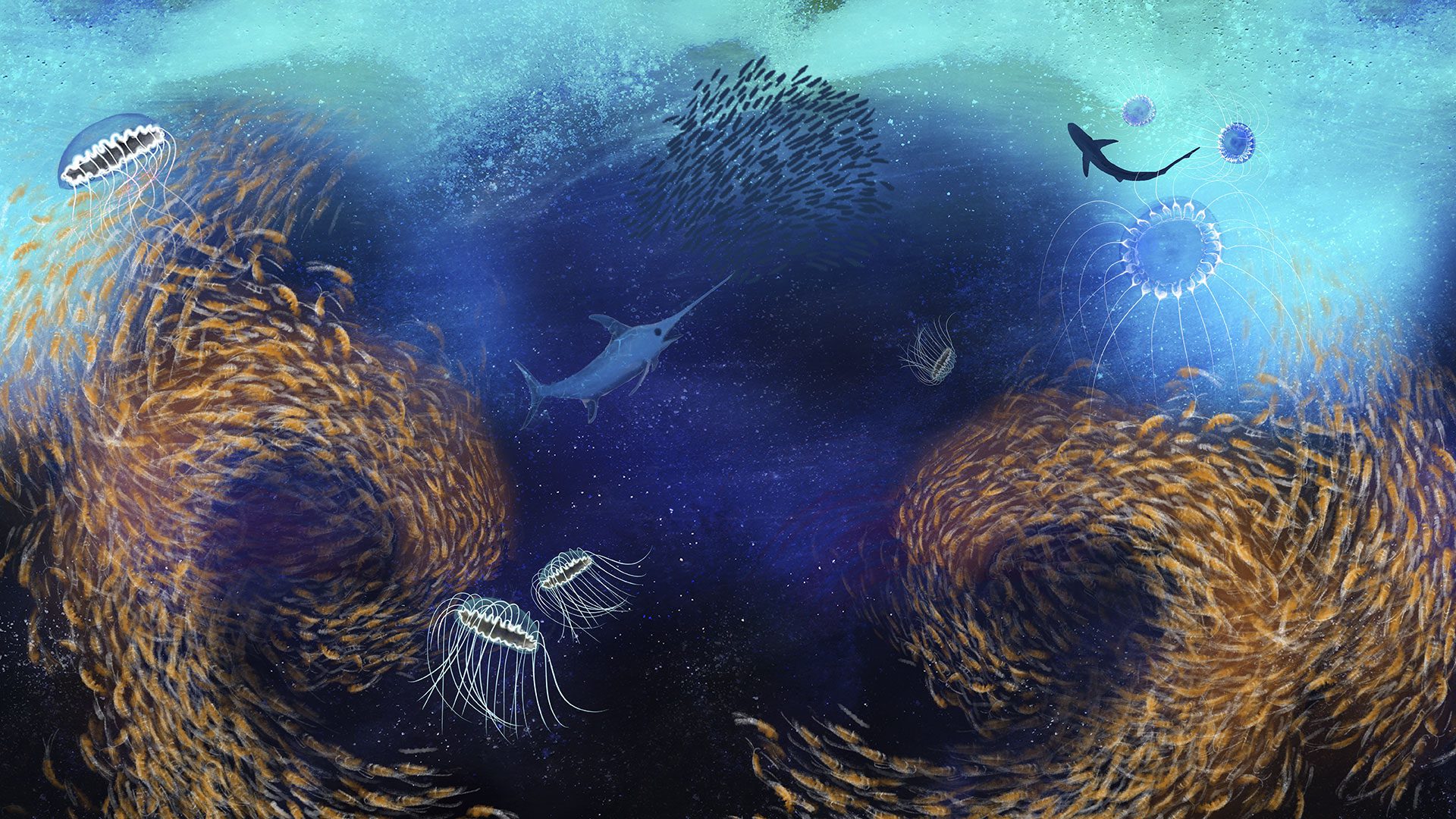
Can the twilight zone be fished responsibly?
As some nations eye the rich fishing grounds of the ocean’s mid-water, scientists investigate what it would mean for top predators
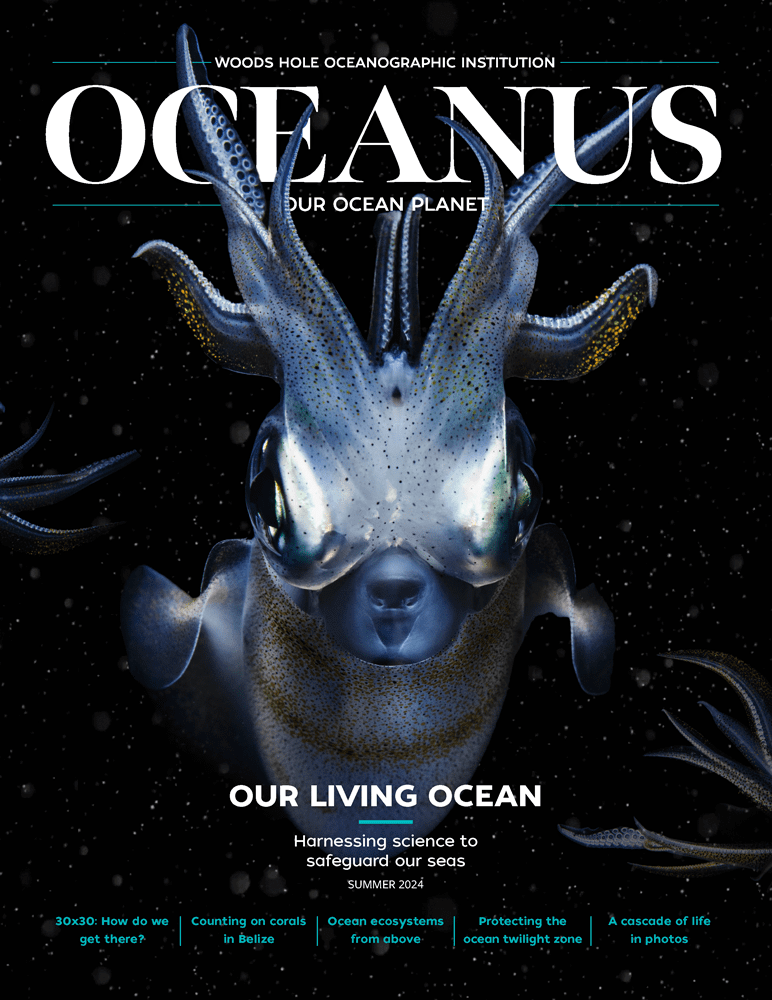 This article printed in Oceanus Summer 2024
This article printed in Oceanus Summer 2024
Estimated reading time: 7 minutes
When exploring anything new—particularly an area of scientific inquiry—it helps to consult the experts who already know the subject inside and out.
So that’s what Ciara Willis, an MIT-WHOI Joint Program Ph.D. student, did. In her case, the experts were tuna and swordfish who spend their summers in the Northwest Atlantic, diving between the surface waters and the mesopelagic or ocean twilight zone (also known as mid-water) off the coast of Cape Cod.
“We’re leveraging the skills of the tuna and the swordfish as information collectors, as ocean samplers, and oceanographers, because they have the ability to collect information that we don’t,” she said. Willis’ advisor, Simon Thorrold, a senior scientist at WHOI, was first drawn to twilight zone research after tagging studies turned up surprising results: These large open ocean animals were spending much more time in deep water than previously thought.
The information Willis asked tunas and swordfish to gather (which, it should be noted, they were doing anyway) revolves around their diet and what it might reveal about the twilight zone, a critically important part of the ocean. It spans from about 200 to 1000 meters (656 to 3280 feet) below the ocean’s surface, is a primary source of food for many large open ocean animals, and plays a key role in carbon sequestration processes.
Around the world, due to the growth in both aquaculture and nutraceutical industries (both of which depend on fish meal and fish oil), interest has been growing within the commercial fishing sector to begin harvesting fish from this part of the ocean. “There is a truly immense amount of fish in the mid-water,” Willis said, “estimated at about 10 billion tons, and that’s just fish, never mind all the squid, shrimp and other invertebrates.”
And yet, there is little available data on how commercial fishing of the ocean’s mid-water might impact economically important surface fisheries like those for tuna and swordfish. Scientists have long known that both tuna and swordfish depend on the mesopelagic zone to some extent—they both dive down deep with some regularity—but exactly how much they need it and what exactly they need it for has largely remained unknown.
Without establishing a baseline of information, it will be difficult to know if this part of the ocean can be fished responsibly, especially since much of the fishing would take place in international waters, where transparency and accountability are harder to establish.
Enter Willis, who sees her work as helping to enable a precautionary approach—the idea
that actions with unknown consequences should be avoided and decisions with potentially disastrous effects should not be rushed.
“There are dark holes in our understanding of the mesopelagic, including the connections between this zone and highly migratory ocean predators,” Willis said. She believes considering food webs and predator–prey interactions is a key part of sustainable fisheries management.
Camrin Braun, a marine ecologist at WHOI who works closely with Willis and Thorrold, said, “If we start extracting the biomass at some meaningful scale, not only are we impacting a resource that we don’t fully understand,” meaning the life in the mid-water, “but it will almost certainly impact a resource that we have been using for centuries,” referring to high-value fisheries like tuna and swordfish.
Stomach contents, however, have their shortcomings: “They only provide one snapshot in time,” Willis said, “so they’re not necessarily reflective of the whole diet.”
The researchers also looked at liver tissue, which provides a broader picture of where a predator’s energy comes from. Body tissues contain essential amino acids that are built from carbon atoms. In the ocean, essential amino acids are only formed at the base of the food web by primary producers like phytoplankton or microbes, so the isotopic ratios of their carbon atoms are fixed from the beginning and stay intact all the way from the bottom of the food web to the top. Different ecosystems’ food webs are fueled by different primary producers, potentially resulting in unique isotopic “fingerprints” among the food webs.
"There are dark holes in our understanding of the mesopelagic, including the connections between this zone and highly migratory ocean predators."
—MIT-WHOI Joint Program Ph.D. student Ciara Willis
Willis and other researchers have determined unique isotopic signatures of food webs from surface waters and the mid-water and they can compare these signatures in tissues of the predators. The composition of their tissue, which is formed by metabolizing the food they eat, shows where they have been eating and, in this case, whether prey species were residing primarily in surface waters or the twilight zone.
It turns out that swordfish get just over a third of their carbon from the mesopelagic zone, despite spending half of their lives there. But bigeye tuna, who spend only 16% of their time down below, get 67% of their carbon from mesopelagic species. For yellowfin tuna, it’s even more dramatic: They spend 3% of their daily time in the ocean twilight zone, but half their carbon comes from there. Given this discrepancy, it appears likely that yellowfin tuna are foraging at night on mesopelagic fish and invertebrates that are migrating into surface waters to feed.
Gut Check
If you’re searching for answers, trust your gut. But when your curiosity centers on the ocean, trust the fishes’ guts! MIT-WHOI Joint Program student Ciara Willis examined the stomachs of 28 marine predators. Here we look at the gut contents of two species in particular: yellowfin tuna and swordfish. From this, we see that life in the twilight zone is far from a guilty pleasure for apex predators. It’s sustenance.
Determining these baselines will prove valuable to the fishing industry and regulatory agencies as commercial interest increases. It’s also crucially important to understand these dynamics and the various forces at play as the ocean continues to undergo massive and rapid changes resulting from climate change, ocean acidification, and other pressures on global fishing stocks.
“I’ve established the isotopic baselines for these deep versus shallow food web communities,” Willis said. “With climate change or heavy fishing pressures, we can now check in with those communities and see how they are shifting or find out how maybe the key players of the food web are changing.”
"I’m very excited about trying to enable fishers and fisheries to be proactive in the climate space. It’s a win–win for everyone"
—WHOI marine ecologist Camrin Braun
The unknowns in this area and the rapidly shifting nature of the ocean have made this a particularly exciting area of research for Willis, who is also passionate about collaboration between scientists and policy experts.
Di Jin, a senior scientist at the Marine Policy Center at WHOI, has been a lead scientist in WHOI’s Ocean Twilight Zone Project with Thorrold and others since the project started in 2018 with funding from the Audacious Project housed at TED. The project has two goals: first to better quantify how carbon moves through the twilight zone and second, to understand the implications of large-scale fishing in this part of the ocean as a dimension of food security in the coming decades.
As a bioeconomist, Jin has studied the economic implications and feasibility of allowing industrial fishing in the ocean’s mid-water. Willis’ work is beginning to inform that research by providing data that helps evaluate the potential impact on other fisheries.
“The impact on valuable surface fisheries has been recognized,” said Jin, “but it’s never the focus of this concern,” although now, he said, “this issue has become, through her work, an important one to be examined.”
Willis said one of the most exciting parts of the project was that their findings would be accessible and perhaps useful to the fishing community, and Jin’s expertise and connections are making this possible.
Braun, too, finds this an especially motivating and important aspect of their work: “I’m very excited about trying to enable fishers and fisheries to be proactive in the climate space, to the extent that we can leverage whatever science that we’re doing to develop climate-resilient fishing strategies,” he said. “It’s a win–win for everyone.”
This research was funded by the Ocean Twilight Zone project (funded as part of the Audacious Project housed at TED), the WHOI Ocean Venture Fund, a Natural Sciences and Engineering Research Council of Canada (NSERC) Postgraduate Doctoral Scholarship, and an MIT Martin Family Society of Fellows for Sustainability Fellowship.
